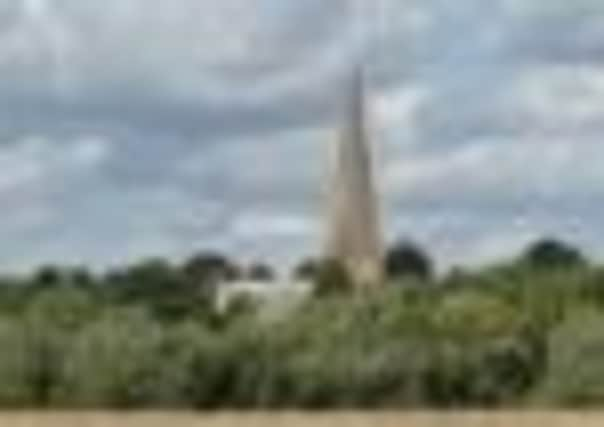Medieval graffiti is well worth a look


You could do worse than visit All Saints Church in Leighton Buzzard, which provided not just very welcome shelter from the wild weather, but also enough intrigue to keep anyone interested in local history or architecture occupied for an hour or so.
We’d first popped into the Costa Coffee in the High Street for a hot drink to fortify us against the cold. Chain cafes aren’t usually my first choice but there didn’t seem to be anywhere else open.
Advertisement
Hide AdAdvertisement
Hide AdThe staff at this Costa were polite and friendly but the place could really do with a bit of a spruce up – tatty chairs aren’t really on when you’re a multi-million pound operation.
The ‘falling masonry’ sign outside the church made us take a step back as we approached the main entrance (the west door), and although the gentleman inside seemed a little surprised to have visitors we were invited to take a look around, and given a handy guide to some of the church’s interesting features.
The first things that strike you are the stunning stained glass windows, all of which were made by Victorian craftsman C E Kempe, whose work also features in the cathedrals of York, Lichfield and Gloucester.
Looking up, you will see the downward-facing angels that adorn the inside of the roof of the nave, with their splendid gold wings. This 15th century roof replaced the original 13th century version, thanks to the generosity of Alice de la Pole, Duchess of Suffolk.
Advertisement
Hide AdAdvertisement
Hide AdThe reason that the angels, and much of the nave, look so smart is that a fire that ravaged much of the building in 1985.
The building had just undergone a restoration programme when the blaze broke out on April 13, destroying much of the nave and chancel roofs and causing serious structural damage to the church’s magnificent spire.
It started in the upper vestry but the cause has never been established, and much painstaking repair work had to be undertaken.
Underneath each angel, on top of a stone corbel, stands a carving of a saint (some of the charred originals can be seen in the north transept). These intriguing little statues include St Jude with a boat, St Matthew with a money box, and St Bartholomew with a flaying knife (one gruesome story of his death has him being skinned alive and then beheaded, and he is also the patron saint of tanners).
Advertisement
Hide AdAdvertisement
Hide AdMuch fun can be had by trying to track down some of the church’s medieval graffiti. You’ll fine a strange-looking bird, a dog, the design of a window and a king’s head. The best by far though is Simon and Nelly – a carving of a couple arguing over what to make for their children’s Mothering Sunday visit.
A spoon-wielding Nelly is shown grabbing her husband by the ear, and legend has it that their row over whether to bake or boil their hotch-potch of leftover Christmas cake and dough resulted in the Sim-Nel cake traditionally eaten at Easter.
Also interesting are the various memorials in the floor and even the walls, my favourite being one decorated with three jaunty owls. The misericords (small shelves under the folding seats, designed to be leaned against during long periods of prayer) are decorated with an interesting array of beasts, including a dragon and a bat.
The church is certainly worth a visit, and on Tuesdays, Fridays and Saturdays there is a coffee shop open from 10am until 3.30pm, serving coffee, light lunches and afternoon teas.